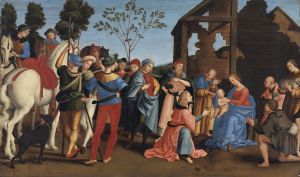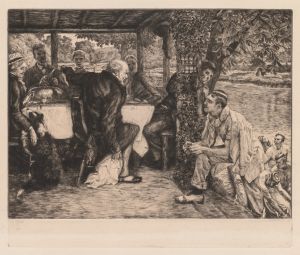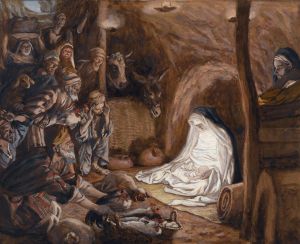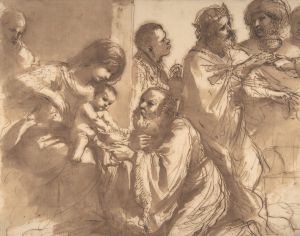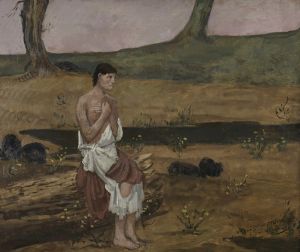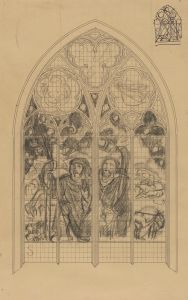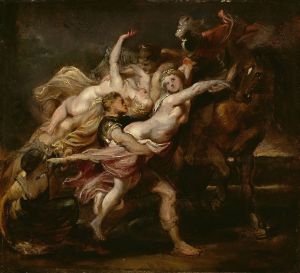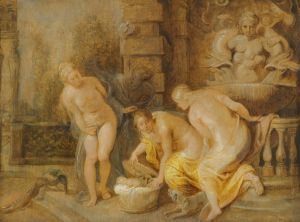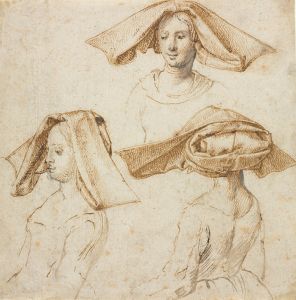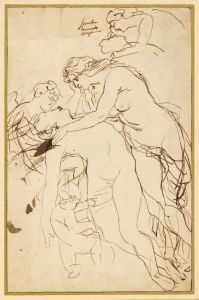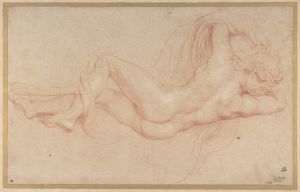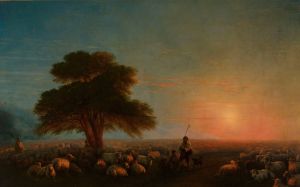
Die Anbetung der Hirten
A hand-painted replica of Peter Paul Rubens’s masterpiece Die Anbetung der Hirten, meticulously crafted by professional artists to capture the true essence of the original. Each piece is created with museum-quality canvas and rare mineral pigments, carefully painted by experienced artists with delicate brushstrokes and rich, layered colors to perfectly recreate the texture of the original artwork. Unlike machine-printed reproductions, this hand-painted version brings the painting to life, infused with the artist’s emotions and skill in every stroke. Whether for personal collection or home decoration, it instantly elevates the artistic atmosphere of any space.
Peter Paul Rubens, a prominent Flemish Baroque painter, created "Die Anbetung der Hirten," also known as "The Adoration of the Shepherds," in 1608. This artwork is a significant example of Rubens' early style, showcasing his mastery in depicting religious themes with dramatic intensity and vivid detail. The painting is housed in the Pinacoteca Civica in Fermo, Italy.
"The Adoration of the Shepherds" illustrates the biblical scene of shepherds visiting the newborn Jesus, a popular subject in Christian art. Rubens' interpretation is notable for its dynamic composition and the emotional expressiveness of the figures. The painting captures the moment when the shepherds, having been informed by angels of the birth of Christ, arrive at the stable to pay homage to the infant Jesus.
Rubens employs a rich color palette and dramatic contrasts of light and shadow, a technique known as chiaroscuro, to enhance the scene's emotional impact. The light in the painting emanates from the Christ child, symbolizing his divine nature, and illuminates the faces of the surrounding figures, drawing the viewer's attention to the central focus of the composition. This use of light not only highlights the spiritual significance of the event but also demonstrates Rubens' skill in creating a sense of depth and volume.
The figures in the painting are rendered with Rubens' characteristic attention to anatomical detail and expressive gestures. The shepherds are depicted with a sense of awe and reverence, their faces conveying a range of emotions from wonder to adoration. The Virgin Mary is portrayed with a serene and contemplative expression, emphasizing her role as the mother of Christ. The inclusion of animals, such as sheep and oxen, adds to the pastoral setting and reinforces the humble circumstances of Jesus' birth.
Rubens' "The Adoration of the Shepherds" reflects the influence of his Italian sojourn, particularly his exposure to the works of Caravaggio and the Venetian masters. The dramatic lighting and naturalistic approach to the human form are indicative of Caravaggio's impact, while the vibrant colors and compositional harmony echo the Venetian tradition.
This painting is an early example of Rubens' ability to blend the naturalistic detail with the grandeur and dynamism characteristic of the Baroque style. It marks a period in Rubens' career where he was beginning to establish his reputation as a leading painter in Europe. His work would go on to influence countless artists and solidify his legacy as one of the most important figures in Western art history.
In summary, "The Adoration of the Shepherds" by Peter Paul Rubens is a masterful depiction of a pivotal biblical event, rendered with dramatic flair and emotional depth. The painting exemplifies Rubens' early artistic development and his ability to convey complex religious themes through powerful visual storytelling.





